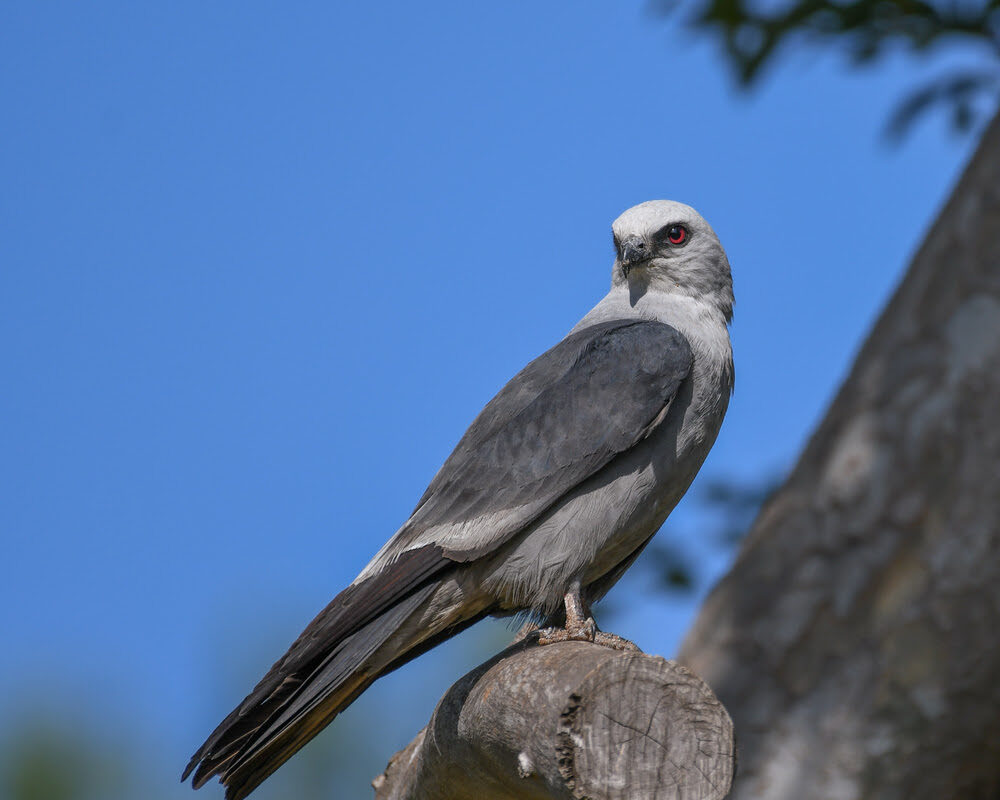Mississippi Kite, Ictinia mississippiensis
Bill Rowe
Elegant and classy, Mississippi Kites wheel over rivers, woodlands, and suburban yards and parks in their daily search for prey, which mostly consists of large insects like grasshoppers, dragonflies, and cicadas, although they will also take frogs, mice, small birds, and other vertebrates. They arrive in spring, usually May; build their stick nests in tall trees and raise their young; and leave again in August and early September, for a long southward journey that takes them down through Mexico and Central America to northern South America. In fact, they are one of only three Missouri raptor species to make such a migration, vacating the United States completely in winter. These days, kites may be found almost anywhere in our area; they are just as likely to be nesting in your neighborhood as out in the countryside. As the warm air begins to rise on summer mornings, carrying insects with it, the kites rise too, and by midday they may be soaring high in the air. They will come back down later in the day and provide better looks as they swoop around and perch on handy treetops.
IDENTIFICATION: A smallish raptor, near the size of a crow, with long tapered wings and a long square-cut tail. Adults are pearly gray with a whitish head and inner-wing patch; the tail is black. Juvenile birds are the same size and shape but have heavy brown streaking below and white bands on the tail; one-year-olds returning in spring show a mix of adult and juvenile feathers. The main confusion would be with falcons, which have a similar wing shape but lack the long, mobile tail; and they have a more direct, powerful flight style, unlike the kite’s agile floating and turning.
ST. LOUIS STATUS: Historically, the core nesting area of Mississippi Kites in Missouri was the lowlands of the Bootheel, but even in the 1960’s they occurred up the Mississippi as far as Fort Kaskaskia, Illinois. By the late 80’s they were nesting in the suburbs of St. Louis, and their numbers have gradually increased ever since, until now they are a fairly common bird in many parts of our area.
Learn more and listen to the calls of Mississippi Kites here.




